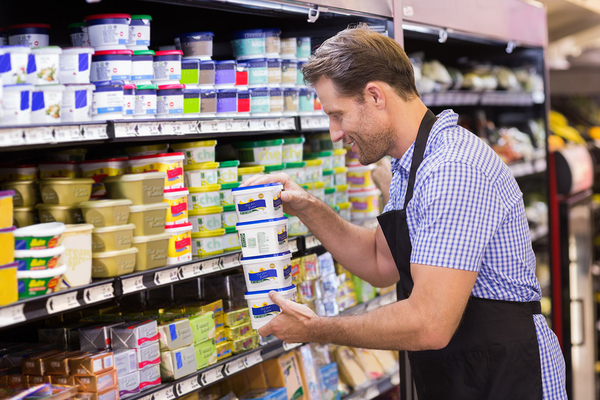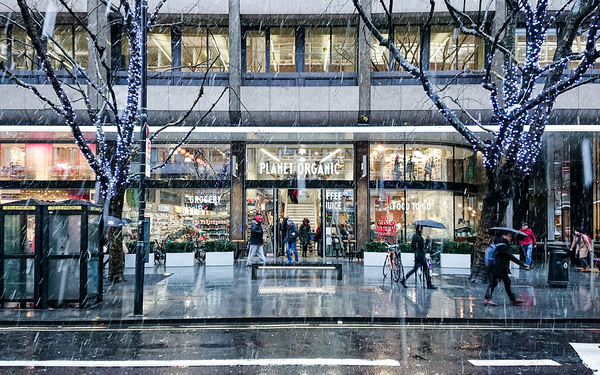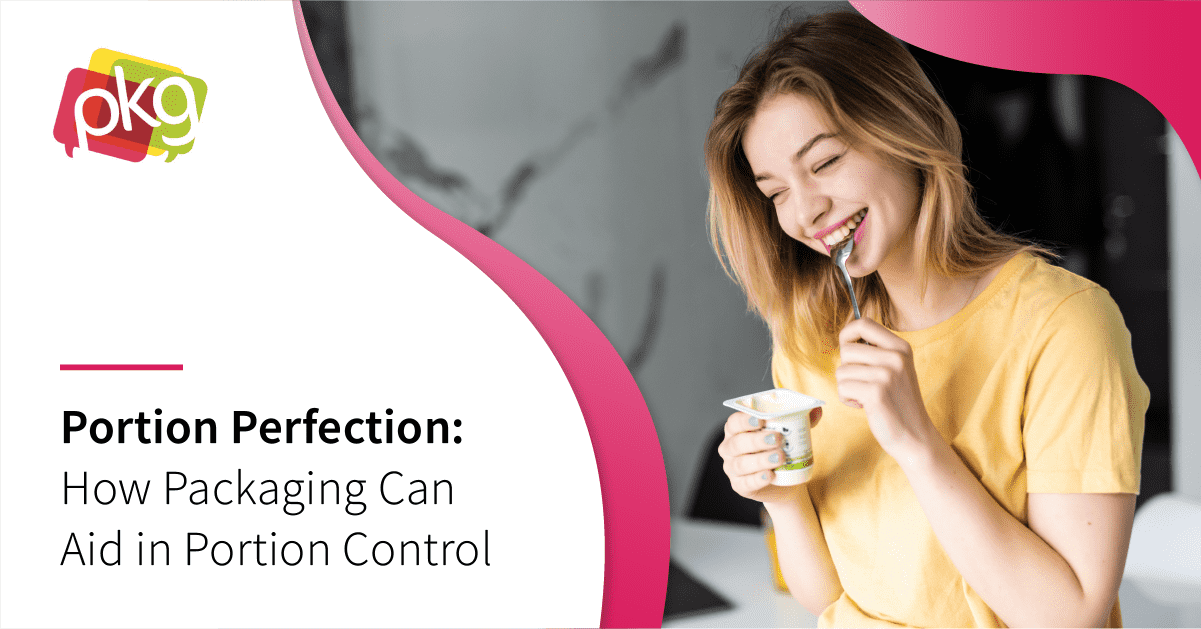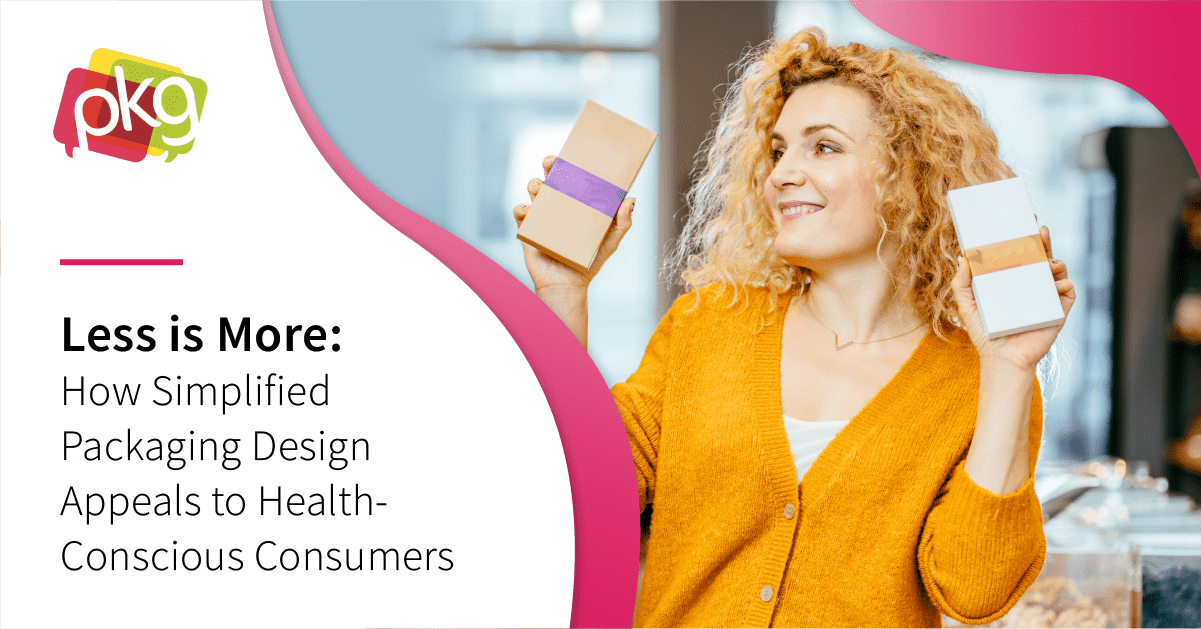In terms of both safety and consumer appeal, it would be difficult to overstate the importance of food packaging design. Neither quality can be neglected in packaging design for any brand that wants long-term success. Consumer packaged goods are fast moving and turn over quickly. How they are packaged determines how efficiently they can be shipped, how easily they can be shelved by retailers, and how well they appeal to the consumers that shop those retailers.

While non-consumer facing packaging is primarily concerned with getting products to retailers and onto store shelves efficiently, even more is expected of unit packaging—the package that the consumer picks off the shelf and places in their cart. These food packaging designs must appeal to the senses, appeal to the consumer’s need for convenience, and stand out in a world in which consumer attention is constantly being demanded by competing products and marketing messages.
The ubiquity of the internet has lowered the average consumer’s resistance to trying new things, and that can be a double-edged sword for brands. While consumers are happy to try new products and new brands, they also refuse to put up with products that tax their patience with clunky, environmentally irresponsible, or difficult-to-use packaging. Getting food packaging design right is part art and part science.
Sometimes the Packaging Is More Recognizable Than the Product
CPG packaging must communicate both what your brand represents and how it will improve the customer’s life. The fact is, most consumers are bombarded with branding messages and have neither the time nor desire to compare and contrast all their options. So they use shortcuts, often in the form of their response to a product’s packaging.
Packaging tells your customers why your brand is better, and there are cases where packaging says the equivalent of perhaps thousands of words with the absolute minimum of text. We all know what the Tiffany blue jewelry box represents, for example, though most of us would be hard-pressed to recognize a piece of jewelry outside its packaging as a Tiffany product.
Such iconic design is difficult in the CPG space, but not necessarily impossible. If, for example, a well-loved brand of cream cheese starts producing and selling butter, it would only make sense that the butter packaging reflect the same qualities that consumers love in their cream cheese packaging. Brands that are easily recognized across a range of products have an advantage over those that are not.
There Is No Substitute for Market Understanding
To get food packaging design “right” in terms of customer appeal, you have to understand your target consumers in depth. How old are they? Do they skew male or female? What types of work do they do? Do they have children? How much disposable income do they have? Do they consider your product a staple, or as a small luxury?
Answers to these questions and others like it can inform your products' packaging in many ways. For example, if your target consumer is a retired person, you would probably want to avoid packaging that is difficult to open or to re-seal. If your product is considered as a small splurge (such as pint containers of premium ice cream), you want the consumer’s “unboxing” experience to be as easy and enjoyable as possible. On the other hand, if your product is for children of busy parents, then the security of the packaging as well as its easy opening and closing will take on more importance.
Don’t forget secondary concerns of your target consumer demographic. If sustainability is a concern (even if it is not the primary concern) of your target audience, your sustainability initiatives in food packaging design will be appreciated, and may put you at an advantage compared to your competitors.
What Customers Experience at the Point of Sale
Few consumers expect supermarket shopping to be a transcendent experience, but neither do they expect it to be sheer drudgery. It is often what consumers experience in the store aisle, visually taking in the products before them, that tips their final decision on a product one way or the other. Some things you cannot control for (like a store that is undergoing remodeling and the upheaval that goes along with it), but others you can.

For example, not only should your brand and its values be instantly apparent from your food packaging design, most of these branding elements should be visible on the part of the packaging that the consumer sees on the shelf. They may want the product with the re-sealable inner sack, or the product with eco-friendly packaging, but they’re unlikely to pick up competing products and read them front and back to discover this information. In other words, if your inner packaging is now re-sealable, make it easy for consumers to discover that.
The supermarket experience is often characterized by stimulation all around, from other shoppers going past, to antsy children riding in the cart, to PA announcements and stockers replenishing shelves. It isn’t easy for food packaging designs to cut through all this to grab the consumer’s attention, but it’s something the art aspect of food packaging design must strive to do.
The Effects of Aesthetically Unappealing Packaging
Face it: the exact same product is more appealing when it is packaged neatly, in attractive packaging, than when it is inside unappealing packaging. And in an age when some product categories must consider things like how their product packaging appears on YouTube unboxing videos and Instagram photos, aesthetics simply cannot be ignored.
And it’s not easy. Not only must your food packaging design make enough of an impact to grab the shopper’s attention, it must stop short of being garish or tacky. The choices of graphics, colors, fonts, and which information to include on which packaging panel are all important. While your product’s packaging design must capture attention, it must also transfer existing, positive consumer attitudes to your packaging. Package design must be many things, but one thing it must not be is ugly.
It's clear that designing aesthetically pleasing packaging is essential for CPG brands, but there's also an important scientific component to package design. Enter your information below to read about the science behind effective package design.
The Science of Satisfying Food Safety Regulations in Food Packaging Design
If food packaging design were only required to look good, then hiring the best designers would solve the problem. But food packaging must conform to many different regulations so that the safety of the product within is assured. This adds another level of complexity to the packaging design process. The FDA regulates not only the safety of what’s in food products, but also how food is processed, packaged, and labeled.
Food packaging must keep food clean and protected against outside conditions, and in many cases must also protect against physical or chemical changes that can occur. Designing food packaging for safety and regulation requirements means that designs must account for several scientific phenomena:
- Physical properties of both the food within and the packaging material
- Chemical properties of food and packaging
- Phase or shape changes of food products
- Chemical changes like oxidation
Building Protection and Convenience Into Food Packaging Design
There are many ways that food packaging designers build both protection and convenience into package designs. For example, nobody wants to buy a soda that has already gone flat, so plastic soda bottles have to be sealed properly before the consumer gets them. And for convenience, large sized soda bottles have screw-top lids that can be tightened easily so that consumers can pour out what they need, put the cap back on, and be confident that the next glass of soda they pour will still be fizzy.
More manufacturers are incorporating re-sealing technology into food packaging designs, helping consumers preserve the freshest possible taste with the minimum of inconvenience. Zipper-seal packaging has become popular for precisely this purpose, keeping candy, cereal, and many other snack foods fresh for as long as possible without demanding a lot of effort from the consumer.
Packaging size is another element of protection and convenience that adds practicality to the art of packaging. Individual serving containers appeal to families with children (for car snacks or school lunches), and for older individuals who may cook for one or two on a regular basis. At the same time, large containers make sense for foods that are prepared and consumed in larger quantities.

When the whole family eats the same breakfast cereal, who wants to deal with individual packages when it is easier for everyone to pass around a large box that will be consumed in a day or two? Convenience, in other words, is in the eye of the beholder, and again, understanding of key consumer audience attributes is necessary to address convenience correctly.
Addressing Sustainability in Food Packaging Design
The science of sustainability has gained significant traction in recent years. Most consumers know that with the consumer-driven economy, waste products can add up significantly, using excessive natural resources, and cluttering the planet with trash when products are used up. And while food packaging may have a smaller impact on the environment than food production, it is the food packaging that consumers interact with and feel like they have some control over.
Average consumers know what packaging products are easy to recycle where they live, and many of them subconsciously factor this information into their product choices at the supermarket. They’re also more aware of over-packaging than they used to be, whether out of concern for the environment or out of concern for the time they will have to spend getting to the product within.
Ultimately, it benefits both consumer and brand to address sustainability in food packaging design. Consumers can feel better about their choices when sustainability is factored into food packaging, and brands can enjoy benefits of lighter packaging, lower shipping costs, and offering a sense of positivity about the environment to their target audience.
Science that Facilitates Art
Finally, scientific advances facilitate the art of food packaging design in some cases. As materials for food packaging designs advance, more options are available for including photography, other graphics, and novel inks and designs in packaging. Some brands even tweak their packaging materials to address tactile feel of packaging to set their products apart from competitors.
When new packaging products are developed, they must show that they adhere to all applicable FDA regulations. When they do, they offer those on the “art” side of food packaging design far more scope for making products appealing to the senses of the shopper. Today there are more options available than ever, and new packaging materials are being developed all the time.
Neither art nor science can dominate food packaging design, because both are necessary. The art of food packaging design is essential for conveying brand values and reaching out to consumers who are bombarded with branding messages during most of their waking hours. The science of food packaging design ensures food safety, while offering consumers greater convenience and offering the planet greater sustainability. When both art and science work together in food packaging design, the end product can be something greater than the sum of its parts.
PKG Brand Design is always on the forefront of new CPG branding and packaging initiatives; please subscribe to our blog for the latest package design industry news!



-min-2.png)



